Your Guide to Plants That Actually Thrive in Dark Corners
I’ve spent a huge chunk of my career setting up gorgeous plant displays in homes and businesses, and the number one question is always, always the same. Everyone has that one corner, you know the one, that gets almost zero sun. They’ve tried putting a plant there, watched it wither, and now they’re convinced they have a ‘black thumb.’
In this article
Let me tell you something: the black thumb is a myth. Success with plants isn’t about some magical gift; it’s just about playing matchmaker. A dark corner isn’t a death sentence for your design dreams—it’s just a specific challenge that requires the right kind of plant.
Honestly, most people kill their plants with too much love. They drown them with water, overload them with fertilizer, and have a full-blown panic attack at the first sight of a yellow leaf. But here’s the secret: low-light plants are the introverts of the plant world. They often do best when you kinda forget about them. They’ve adapted to survive, not just to look pretty. My job has been to learn their secrets, and now I’m sharing them with you so you can finally get that green look, no matter how shady the spot.
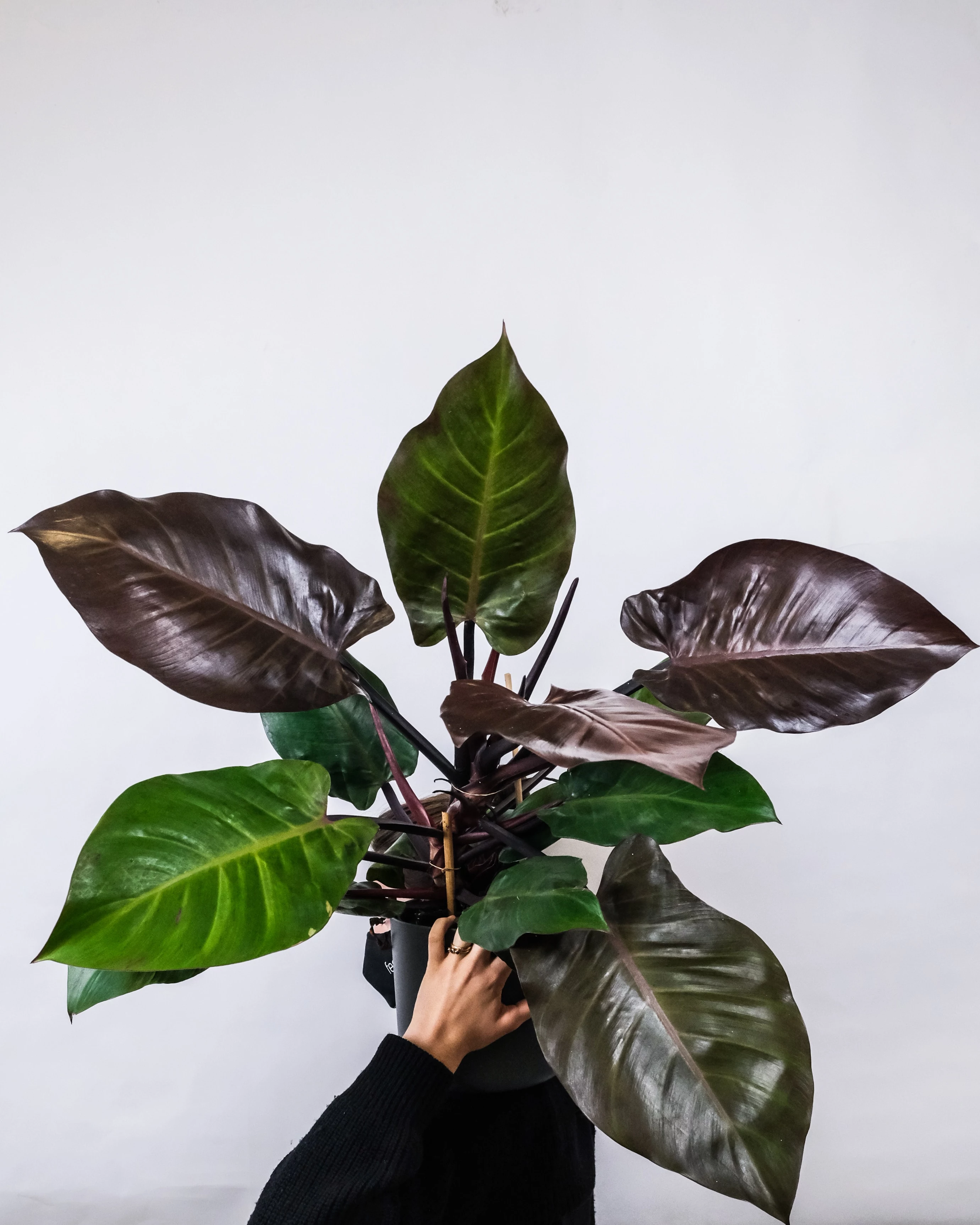
So, What Does ‘Low Light’ Even Mean?
Before you run out and buy a plant, you’ve got to figure out what you’re actually working with. ‘Low light’ is super vague. What’s dim to you might be a tanning bed for a different plant. The pros have fancy tools, but you don’t need any of that. There’s a much easier way.
It’s called the hand shadow test. Seriously, it’s that simple. On a relatively bright day, hold your hand about a foot over the spot where you want your plant to live. Now, look down at the shadow.
- A shadow with a super sharp, clear outline? That’s bright, direct light. Way too intense for our low-light friends.
- A shadow that’s a bit fuzzy but you can still clearly make out the shape of your hand? That’s bright, indirect light. This is the sweet spot for a ton of houseplants.
- A very faint, blurry shadow with no real definition? Bingo. That’s true low light, and it’s exactly where our chosen plants will feel at home.
- No shadow at all? Okay, that’s a closet. No plant (that’s alive, anyway) can survive there without a dedicated grow light.
These plants have evolved to be incredibly efficient. Their leaves are often bigger, thinner, and a much deeper green. Why? It’s all about creating more surface area and packing in more chlorophyll to soak up every last little bit of available light. By the way, this is why a variegated plant with white or yellow patches might turn all green in a dark spot—it’s ditching the fancy colors to produce more chlorophyll just to survive!
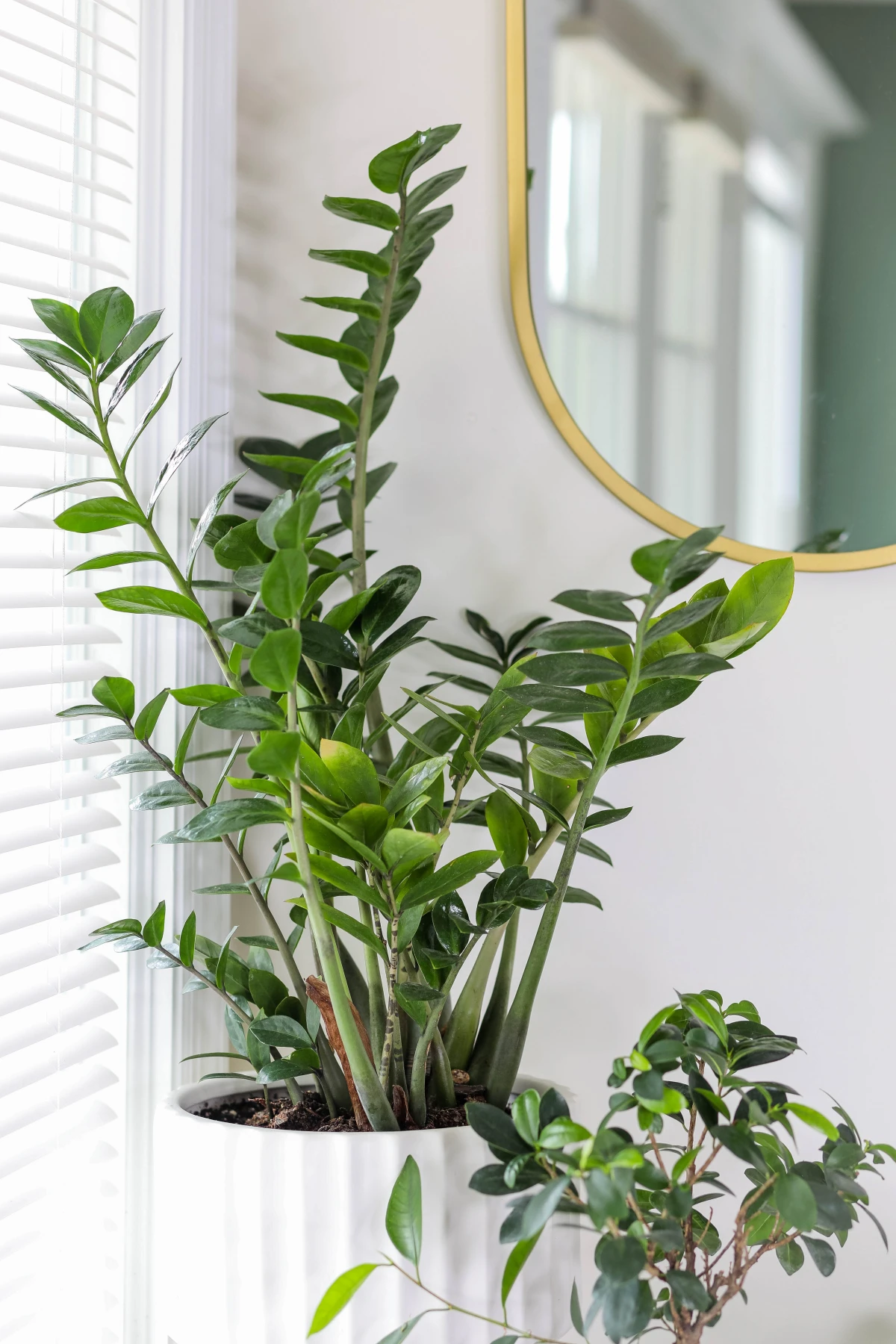
My Go-To, Nearly Indestructible Low-Light Plants
Over the years, I’ve developed a short list of absolute champions. These are the plants that I trust for the toughest spots—the ones that look amazing and just keep going. Here are the tried-and-true options that won’t let you down.
1. The Cast Iron Plant
This one absolutely lives up to its name. If you want a plant that’s basically bomb-proof, this is it. Hailing from the dark forest floors, it’s built for shade. The leaves are a deep, luxurious green with a tough, leathery feel. I’ve seen these plants still looking great in a lobby corner a decade after I put them there.
How to keep it happy:
It hates direct sun, which will scorch its leaves and leave ugly brown spots that never go away. So, a hallway or a room with a north-facing window is perfect. But the real key is watering. Let the soil dry out completely. For a medium-sized pot (say, 10 inches), that could mean watering only once every 3-4 weeks. It’s a super slow grower, so don’t freak out if you don’t see a new leaf for six months. That’s totally normal.
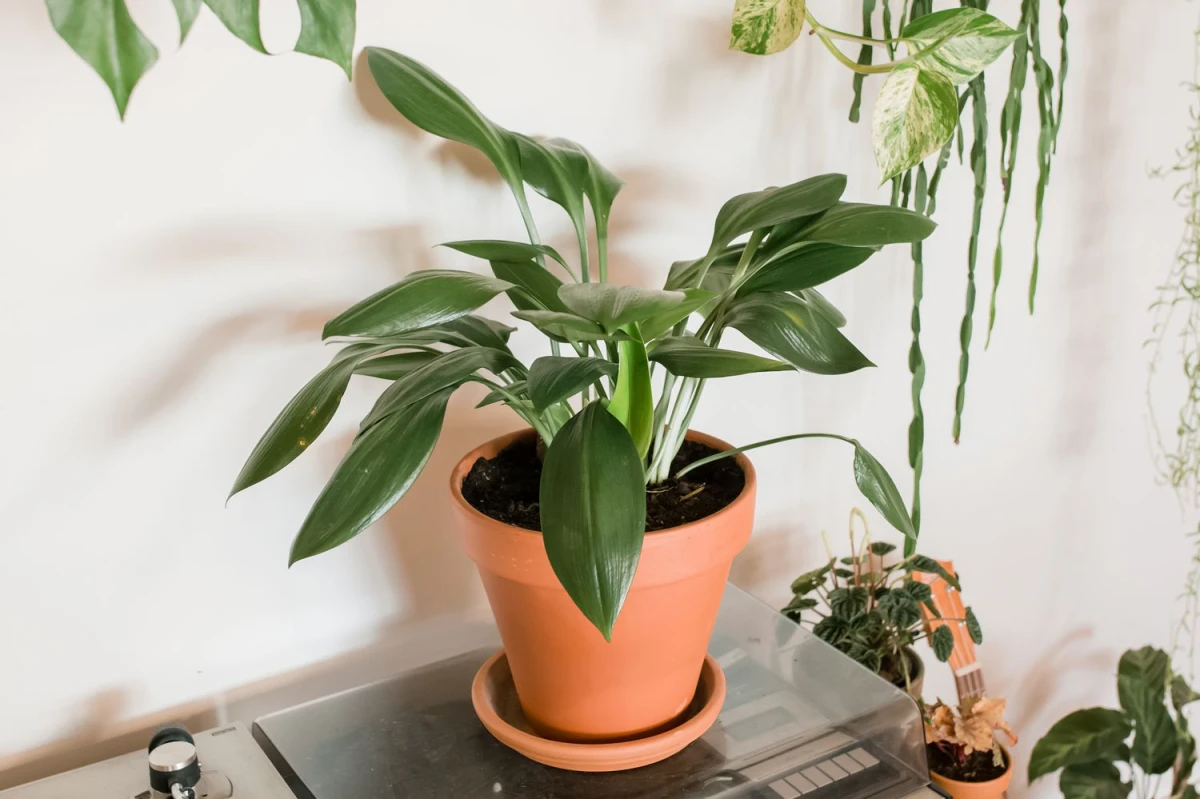
Good to know: A healthy Cast Iron Plant is a slow and steady grower, but it can eventually reach up to 3 feet tall and just as wide, making it a fantastic floor plant. Expect to pay between $25 and $60 for a decent-sized one at a nursery.
2. The ZZ Plant
The ZZ Plant is an interior designer’s dream for a reason. Those waxy, dark green leaves look like they’ve been polished by hand, and they’re fantastic at reflecting a little light around a dim room. It looks modern and chic, but it’s hiding a secret.
How to keep it happy:
The key to the ZZ is what’s happening underground. It grows from these big, potato-like things called rhizomes that store water. When you realize that, you understand that overwatering a ZZ is like trying to drown a camel—it’s the #1 way to kill it. Wait until the soil is bone dry, then give it a good soak. And a heads-up: all parts of this plant are toxic if eaten, so keep it away from curious pets and kids. The sap can also irritate sensitive skin, so I’d recommend wearing gloves when you’re repotting it.
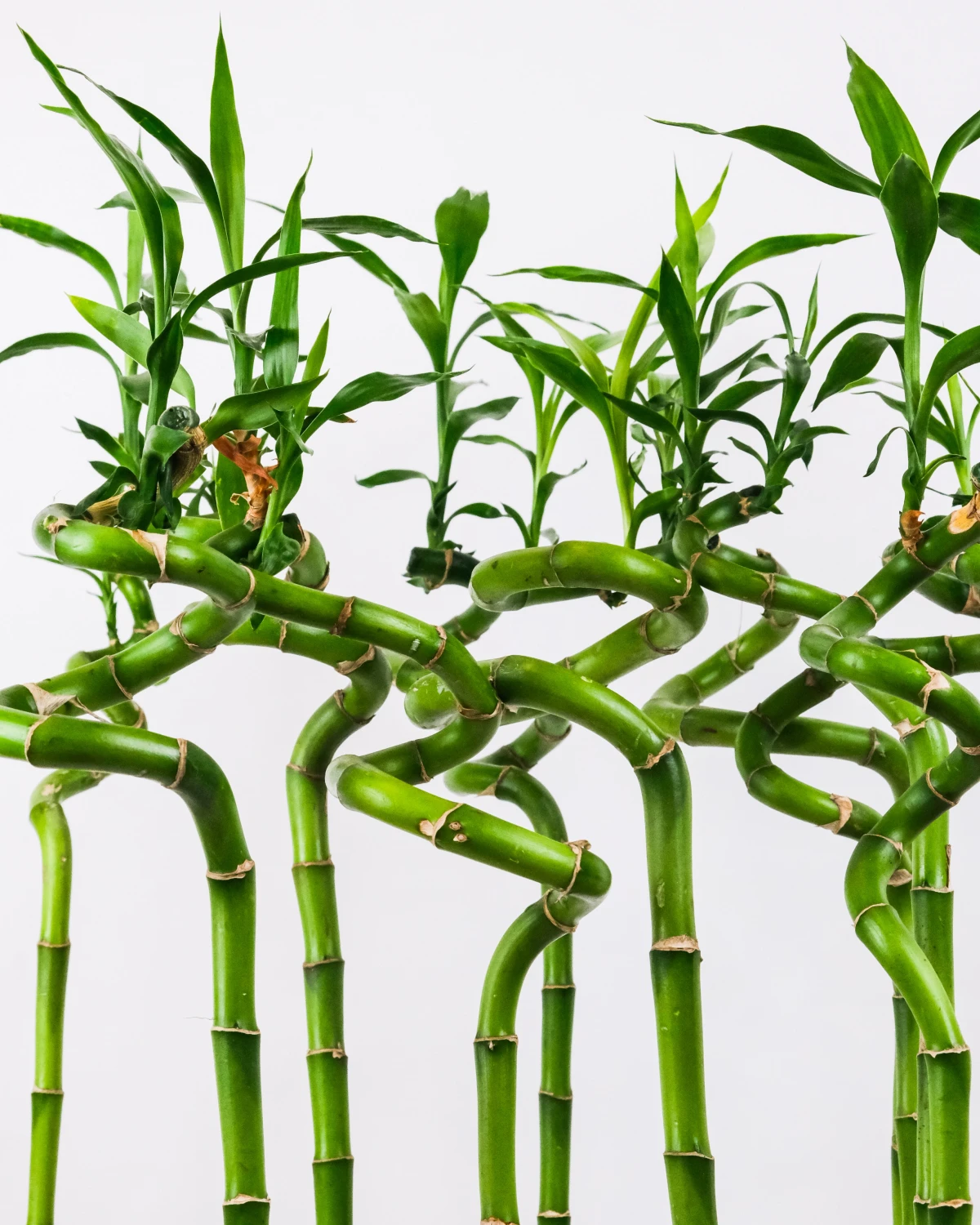
Emergency Rescue Plan! Seeing yellowing leaves and a mushy base? You’ve overwatered. Here’s the fix:
- Gently take the plant out of its pot.
- Inspect the rhizomes. Cut away any that are black, mushy, or smell bad using a clean knife or shears.
- Let the healthy rhizomes air-dry for a few hours.
- Repot in fresh, completely dry potting mix in a pot with good drainage. Don’t water it for at least a week!
3. The Snake Plant
Some people still call this by its old name, Sansevieria. Whatever you call it, it’s famous for being nearly unkillable. Its stiff, upright leaves add a great architectural element to a room, perfect for adding some height to an empty corner. It’s a survivor, through and through.
How to keep it happy:
Think of it as a succulent. Drench the soil, then ignore it until it’s completely dry. In the winter, you might only water it once every couple of months. Overwatering is its only real weakness. Because they are so prone to root rot from sitting in water, I strongly suggest planting them in a terracotta pot. The porous clay helps pull moisture out of the soil, which these guys love. You can find a small one for about $15, with larger floor models running $50 or more.
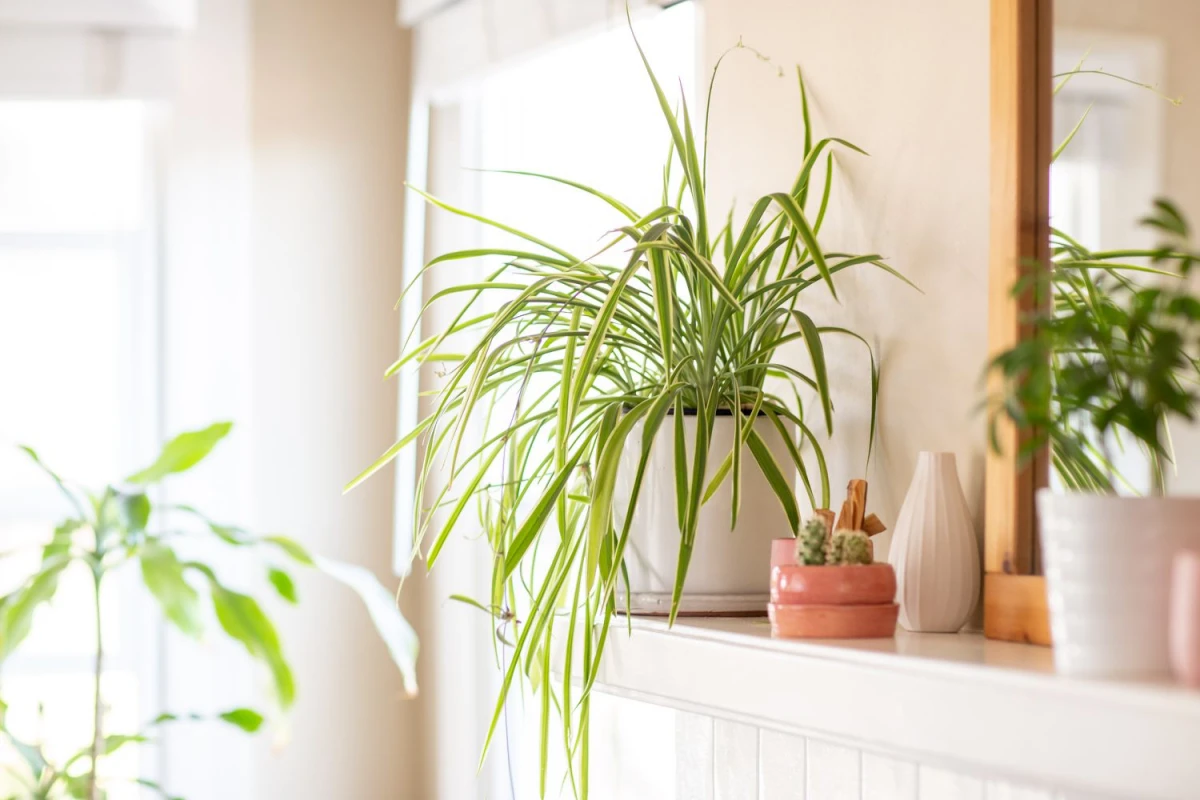
4. The Pothos
Oh, the humble Pothos. This is the workhorse of the indoor plant world. It’s forgiving, grows fast, and you can do almost anything with it—let it trail from a hanging basket, cascade down a bookshelf, or even climb up a wall. It’s often confused with the Heartleaf Philodendron, but Pothos leaves are generally thicker, waxier, and more heart-shaped.
How to keep it happy:
It will tolerate low light, but it might get a bit ‘leggy’—meaning the stems get long and sparse between the leaves. Don’t be afraid to give it a haircut! Pruning the vines actually encourages it to grow fuller and bushier from the base. A ‘Golden Pothos’ will keep its yellow splashes in low light, but the really fancy white variegated ones (like ‘Marble Queen’) will likely turn all green to get more light. Like the ZZ, its leaves are toxic if chewed on, so keep those pretty vines away from pets and kids.
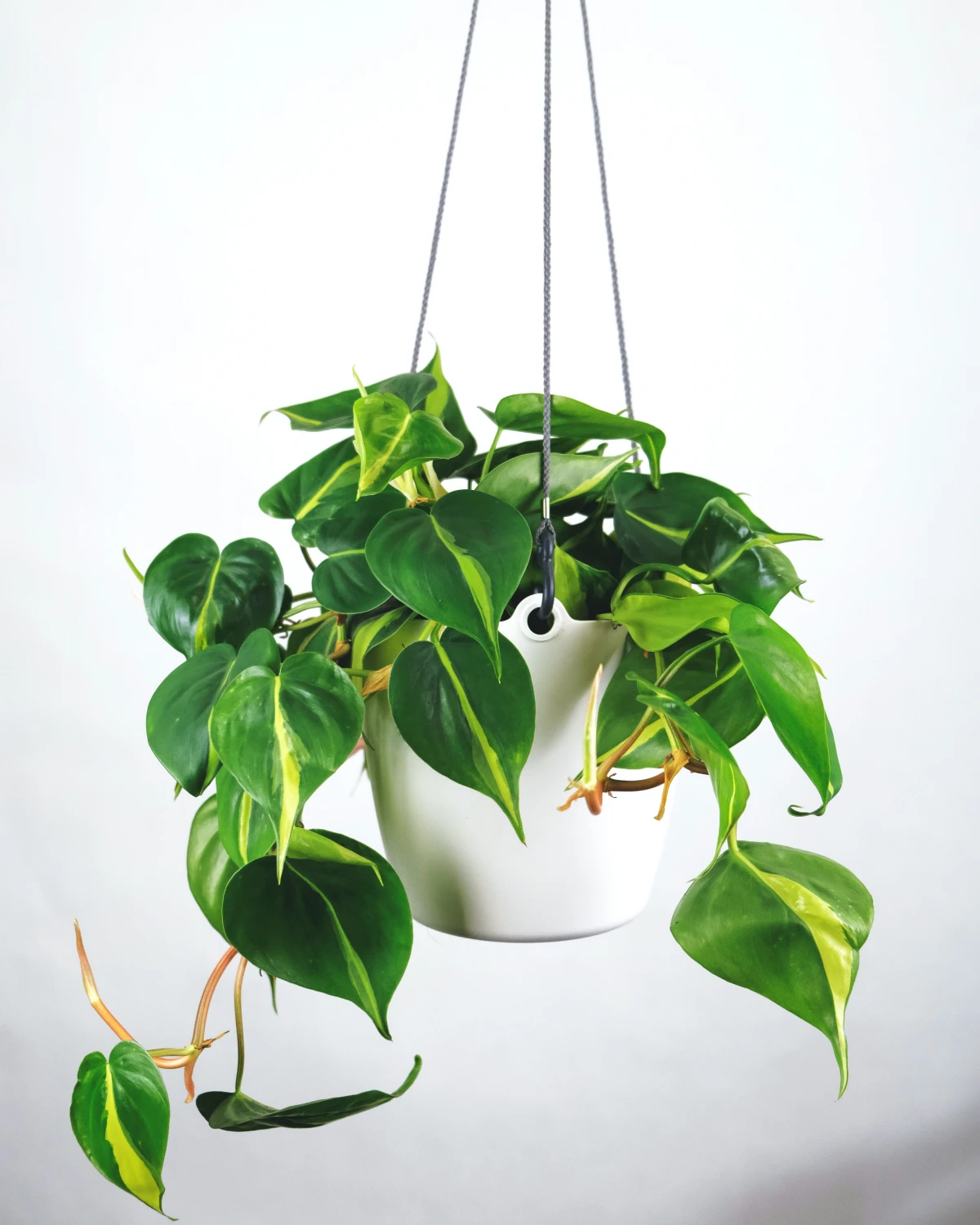
How to Care for Them Like a Pro (It’s Mostly Doing Less)
Choosing the plant is step one. Step two is learning to care for it properly. For low-light plants, this almost always means less is more.
The Watering Dilemma
More plants die from overwatering than anything else. Period. In a dark spot, a plant uses less water and the soil dries out way slower. You have to adjust.
- The Finger Test: Don’t just tap the topsoil. Stick your finger in there up to your second knuckle. If you feel even a hint of moisture, walk away.
- The Pot-in-a-Pot Trick: Fell in love with a gorgeous ceramic pot with no drainage hole? We’ve all been there. Don’t plant directly in it! This is a classic beginner mistake. Instead, keep your plant in its cheap plastic nursery pot (the one with all the holes), and simply place that inside your pretty decorative pot (the cachepot). When you water, take the plastic pot out, water it in the sink, let it drain completely, and then pop it back in. Problem solved.
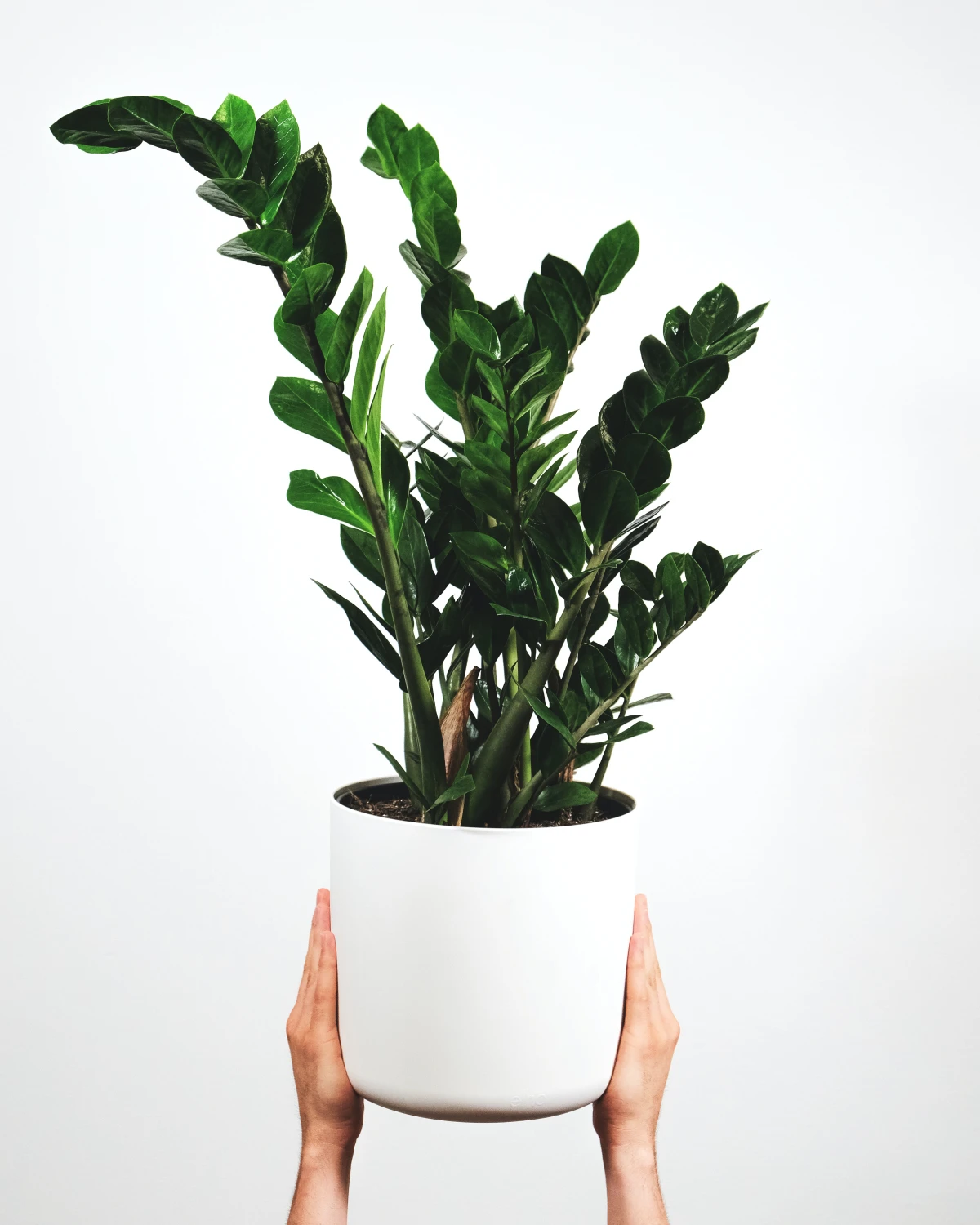
The Right Soil Mix (And Your Shopping List)
That bag of all-purpose potting soil is okay, but you can make it so much better. The goal is to create a chunky, airy mix that drains fast and prevents waterlogged roots. Here’s a simple shopping list to get you started:
- A good quality potting mix: 1 bag (Look for brands like Espoma or FoxFarm. ~ $15)
- Perlite: 1 small bag (These are the little white rocks that add aeration. ~ $10)
- Your Plant of Choice: (e.g., a 6-inch ZZ or Snake Plant. ~ $20-$40)
- A pot with a drainage hole: (Just slightly bigger than the one it came in. ~$10-$30)
My go-to recipe is simple: mix about 60% potting mix, 30% perlite, and 10% orchid bark (if you have it) in a bucket before you pot your plant. This little extra step is a game-changer for preventing root rot.
Fertilizer: Seriously, Take It Easy
Because they grow so slowly, low-light plants are not hungry. Over-fertilizing will burn their roots and stress them out. Only fertilize during spring and summer, and always dilute a balanced liquid fertilizer to half the recommended strength. Once a month during the growing season is plenty. For some of my clients’ plants in very dark spots, I only fertilize twice a year.
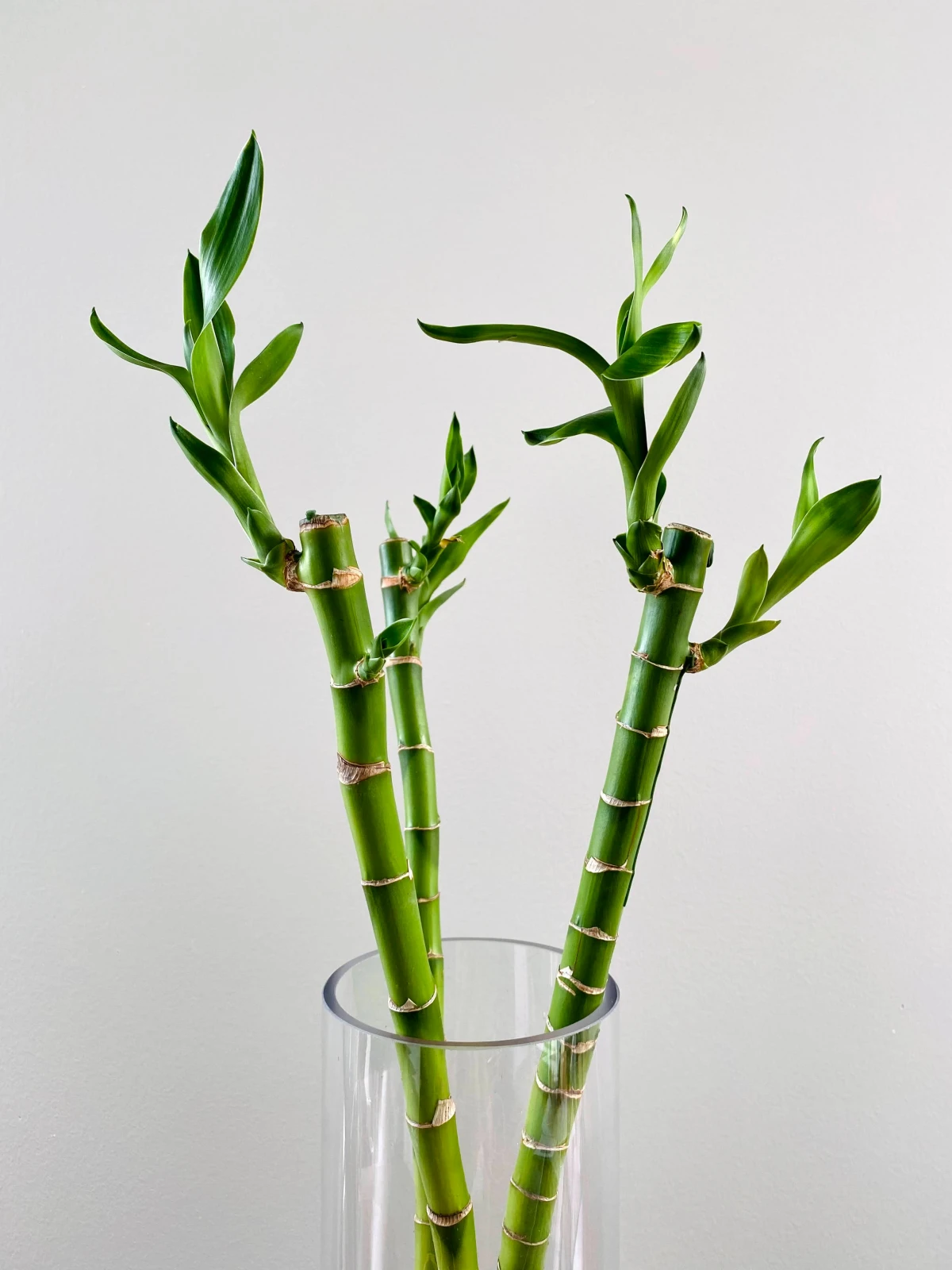
Quick Wins and Troubleshooting
- Do This 5-Minute Task: Got a spare moment? Grab a damp cloth and gently wipe the dust off your plant’s leaves. A layer of dust blocks light, and in a dim room, every little bit of light counts. It’s like opening the curtains for your plant!
- Pest Patrol: Pests can be an issue. For those annoying little fungus gnats, letting the soil dry out is your best defense. For other creepy crawlies, look closely. See little white cottony fluff where the leaf meets the stem? That’s mealybugs. See super-fine, faint webbing on the undersides of leaves? Spider mites. For both, just dip a Q-tip in rubbing alcohol and dab them directly. It’s often enough to stop a small problem from becoming a big one.
The Bottom Line
Getting it right with low-light plants is all about a change in mindset. You’re not just a plant owner; you’re a plant observer. Your job is to give it the right conditions and then, for the most part, get out of its way. They’re not ‘difficult’ plants; they’re just incredibly efficient.
So forget about past failures. Pick up a tough guy like a Snake Plant or a ZZ Plant, put it in the right spot, and learn its rhythm. You’ll be shocked at how much life and beauty it brings to a room while asking for almost nothing in return.
Inspirational Gallery with Photos
Wondering why your low-light plant has a single yellowing leaf?
Before you panic, check its location. Often, it’s not a sign of death, but of normal aging. Low-light plants are incredibly efficient; they shed older, lower leaves to redirect energy towards new growth. However, if you see multiple yellow leaves, especially new ones, the culprit is almost always overwatering. Check the soil moisture and let it dry out completely.
The Cast Iron Plant (Aspidistra elatior) became a staple in dimly lit Victorian parlors, surviving coal dust, gas fumes, and near-total neglect. Its history is a testament to its toughness.
The soil secret: Generic potting mix can be a death sentence for shade-loving plants because it holds too much water. Look for a fast-draining mix, like those for cacti and succulents, or improve a standard mix by adding a handful of perlite or orchid bark. Brands like Espoma and FoxFarm have great airy options that help prevent root rot.
- Get more plants for free.
- Create living, personal gifts for friends.
- Save a broken stem from the compost bin.
The trick? Propagation. Many low-light champions like Pothos or Philodendrons will grow new roots from a simple cutting. Just snip a stem below a node (where a leaf meets the stem), place it in a jar of water, and watch the magic happen in a few weeks.
Snake Plant (Sansevieria trifasciata): Its sharp, vertical lines offer a sculptural, modern feel. Ideal for tight spaces as it grows up, not out.
ZZ Plant (Zamioculcas zamiifolia): Features graceful, arching stems and glossy leaves, creating a lush, softer look that fills a space more horizontally.
Both are incredibly hardy, so your choice is purely about aesthetics: architectural statement or gentle elegance.
Don’t be fooled by a pretty pot: The number one accessory for a thriving low-light plant isn’t a mister or a special fertilizer—it’s a pot with a drainage hole. Root rot from sitting in water is the fastest way to kill these plants. If you’ve found the perfect decorative planter without one, use it as a cachepot: keep your plant in its plastic nursery pot and simply place it inside.
According to NASA’s Clean Air Study, common houseplants like the Peace Lily and Snake Plant can filter indoor air pollutants such as benzene and formaldehyde.
While you’d need a dense jungle to fully purify a room, placing even one of these in a low-ventilation area is a beautiful, natural way to contribute to a healthier indoor environment.
Pairing your plant with the right pot can elevate your decor. The deep, dark greens of most low-light plants create a stunning contrast with pots in warm, earthy tones. Think terracotta, sand, or creamy white. The natural texture of an unglazed pot against the waxy leaves of a ZZ Plant, for example, adds a layer of sophisticated visual interest.
Watering tips for the shade-dweller:
- Always check the soil first; poke your finger two inches deep. If it’s damp, wait.
- Water thoroughly until it runs out the bottom, then discard all excess water from the saucer.
- Reduce watering frequency by half during the fall and winter when plant growth naturally slows down.










